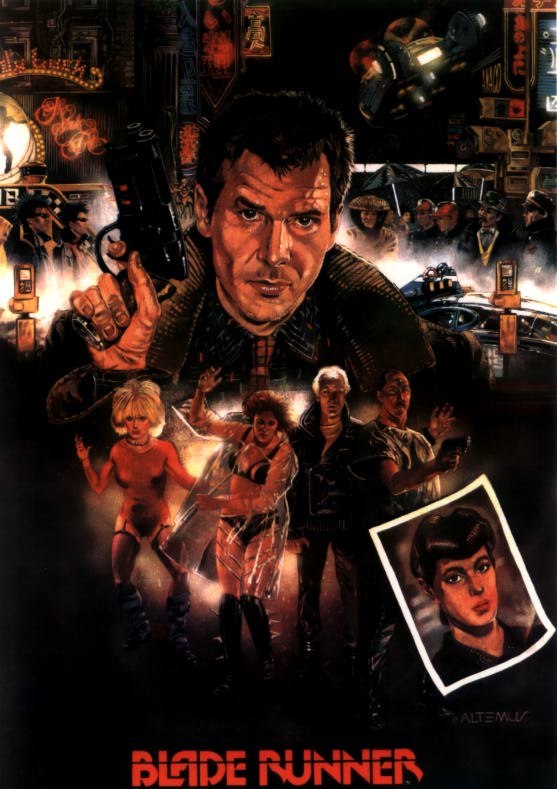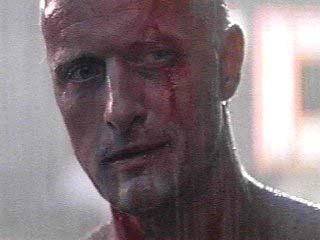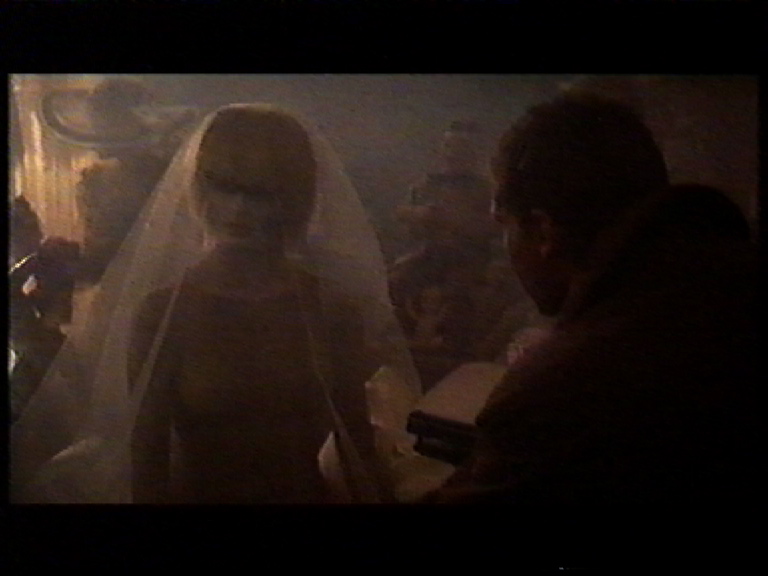Presently, artificial intelligence is a major autonomous technology. The advent of artificial intelligence has been fast approaching for years. In our society, the anxiety of a being other than human overcoming our intelligence is incomprehensible. In Blade Runner, Rick Deckard is responsible for the decommissioning of Nexus-6 replicants with enhanced features of physicality and intelligence. On the surface, the film portrays a dystopia where humanity is at odds with itself; however it also explores important philosophical questions concerning our post-modern consciousness and attitudes towards our own memories and identities. Memories are what shape us as individuals. As children we learn not to touch the stove because it is hot, we learn that an object falls to the ground if we let it go, but most of all we learn that our actions have consequences. Years of experience from the memories stored into our internal hard drives help us through making choices and discerning right from wrong. The replicants in Blade Runner, with memories implanted can be days old and still act and think of an adult mind. Rachel, a replicant with implanted memories, is introduced by Dr. Eldon Tyrell, of Tyrell Corp. as an experiment, and nothing more. Dr. Tyrell explains further;
We began to recognize in them, a strange obsession, after all they are emotionally inexperienced with only a few years in which to store up the experiences for which you and I take for granted. If we gift them with a past it creates a cushion to which we can control them better. (Scott 1982)
Shortly after, Deckard is confronted by an anxious Rachel at his apartment. Rachel shows Deckard a picture, which in her eyes provides proof that she is not a replicant. Deckard reveals that she is in fact a replicant by recounting Rachel’s childhood memories, and telling her that they are implanted memories. He is shocked by Rachel’s emotional response, perhaps expecting a cold and barren reaction. Rachel’s implanted memories gave her the gift of feeling the ultimate experience of human life. Such an emotional response unique to humans begs the question; what makes an authentic human being?
In contrast, Leon, a Nexus 6 replicant, where the audience is introduced to in the opening scene, is being tested by a Voight-Kampff empathy test. The test is engineered in such a way to provoke an emotional response in the subject. The final question the interviewer asks is about Leon’s mother, which in turn, Leon stands up and exclaims, “Let me tell you about my mother,” and shoots the interviewer in cold blood with a barren face, empty of any emotion. The emptiness in Leon can be viewed as a life without experience and memory; a life with no mother to think of. When we think of a murder in the context of our daily lives, separate from the film, we view them as monsters with no soul. The same idea is with Leon, except that he actually has no memory. Memory is an experience that can also shape our morals. Rachel saves Deckard’s life from Leon; where Leon, after seeing Deckard lay waste to one of the Nexus-6 replicants, Zhora, seeks immediate revenge. Primarily, the motivation that makes Leon such a ruthless individual can be one of the only emotions he holds; fear. As he is beating Deckard he exclaims, “Painful to live in fear isn’t it?” (Scott 1982)
The replicants, as explained by Bryant, a police captain signing Deckard onto the assignment of taking care of the Nexus 6: “They were designed to copy human beings in every way, except their emotions. But the designers reckoned after a few years they might develop their own emotional responses: hate, love, fear, anger, envy.” (Scott 1982) A measure to defeat the emotional responses in being created to an exact likeness to humans, is a defect which gives the androids only 4 years of life. The response to non-human beings being able to feel and develop emotion is seen as dangerous. Rick Deckard, a somewhat unsympathetic character in the beginning of the film, is prompted to kill these replicants because of the danger they hold towards humanity. As the film progresses, the replicants are gifted with characteristics that hold them as tragic figures, seeking empathy from the audience. Concerning Roy Batty, the Nexus 6 who is the more capable at the end, is the most sympathized replicant in the film. The knowledge of his finite existence leads him on a frantic and mad path to live and cram as much living into his 4 year span as possible. With no “cushion” of implanted memory, Batty is faced with a looming death with no cause or purpose but is more than capable of every emotion. He has a strong desire to live. Towards the finale of the film, a bruised and beaten Deckard is faced by the last Nexus-6 he was commissioned to decommission, Roy Batty:
I've seen things you people wouldn't believe. Attack ships on fire off the shoulder of Orion. I watched C-beams glitter in the dark near the Tannhauser gate. All those moments will be lost in time... like tears in rain... Time to die. (Scott 1982)
Batty’s last words are surrounded by beautiful music and imagery. Batty recounts his memories in a beautiful monologue. His tears are hidden from the drops of rain. Emotions plague this synthetic being; Emotions which stem from memories. But how can artificial intelligence have such an effect? It’s through Batty that the audience can see a possibility of new partialities. He is extremely intelligent, poetic, and callous. Roy is not a static character. Unlike Rachel, he delights himself as one without implanted memory. In Tyrell Corp, when confronting his maker, Tyrell tells him that his looming death is inevitable. Roy remarks that he has done “terrible things” through his search for prolonging his life, suggesting further, his knowledge of moral human behavior. Seeing Roy as a robot is entirely subjective at the end. The audience delights in his human-like character. Roy is a figure seen with the amalgamation of both the fear of death, and the triumph of life, particular human qualities.
At several instances in the film the audience sees emotional outbursts from the replicants. From Leon, we see his fear of death when he is beating down Deckard. Pris and Roy are seen as lovers. Roy, much more than the other replicants, is shown to have the most possibility of humanistic characteristics. The connections he makes with the other replicants and human characters alike shape him to be much more than a barren and unfeeling figure. However this is not the only significant character in blending human/replicant consciousness.
A poignant and uncanny moment in the film is the connection between Deckard and Rachel. There is something that is much more than physical attraction going on between the two characters. This is a significant revelation in eliminating anything that can be discernible between replicant and human. At the end of the film, after the battle with Roy, Deckard returns to Rachel. They both say that they love and trust each other. They have feelings, emotions, and memories which link them to each other. These memories could not be added by a program or a computer chip. Even though implanted memories are placed in Rachel, there is something much more going on within her than programming and circuitry. When Rachel and Deckard are both leaving, Deckard finds a unicorn origami made by Gaff. His dream sequence earlier in the film seems to suggest that Gaff knows about this hidden memory which reveals the question; is Deckard a replicant also? But it also adds some commentary. What are the important differences between a replicant and a human? If a replicant can have memories, feel emotions, and make attachments to other conscious and feeling beings, do the differences really matter? Does the question of Deckard’s love for Rachel act as a metaphor for humanity and technology? It could be so. The approach of technological advents through history shows us how it can shape mankind’s mind, culture, and society. In the film, it is finalized with the question concerning our own mechanized selves and our relationship towards scientific technologies.
In dealing with the continual consolidation of replicant and human, it may be easy to get lost in distinguishing both. However there are some instances in the film that remind the audience that the replicants are still robots and not human. Their eyes glow in the dark, which is one of the only visual and physical distinguishable characteristics. When the frame shows the replicants in shadow, their eyes have an eerie glow to them, almost like seeing reflective mirrors within their skulls, that might suggest a mirror image of the human when viewing the replicants. When Deckard kills some of the replicants, their deaths provide further imagery that they are replicants. When Zhora is fleeing from Deckard, she is shot in the back several times. She begins to crash through displays containing lifeless mannequins. She soon joins the mannequins in the state of the display. Pris dresses up as one of J.F. Sebastian’s toy robots. When Deckard infiltrates Sebastian’s home his search ends up in a room full of toy robots and dolls, including Pris. Deckard finds it difficult to distinguish Pris at first, but then ends up being physically handled by her. Her death comes from gunshot wounds to the abdomen, which results in her shaking uncontrollably. Her violent shaking also gives the audience a picture of a non-humanistic death. The strength of the replicants is also a major discernible difference between replicant and human. Leon, Pris, Zhora, and Roy Batty all possess superhuman qualities. The importance of reminding the audience that the replicants are in fact machines, seems to give a message that the viewer might forget that they are watching artificial beings.
Considering how the identities of each character start developing, a major cause for concern for the replicants; Roy Batty, Leon, Pris, and Zhora, is a great fear of death. The significance of life is shared by both the replicants and humans. Gaff’s message, “It’s too bad she won’t live! But then again, who does?” (Scott 1982) which reverberates through Deckard’s mind, is an important notion of how life is portrayed in the film. The commonly used term, “my whole life flashed before my eyes” concerning near death experiences, usually provides an individual insight about the significance of life. The knowledge of a finite end gives the replicants an overwhelming sense of self-preservation, which relates to what most humans feel when confronted with their own mortality. With Roy, Leon, Pris, and Zhora, we can assume that they did not have the “cushion” of implanted memories installed, but they still have a great need to keep living. Do memories really matter when it concerns the mortality of any being? Throughout this film where memories are such a central theme, it can be difficult to discern the differences between implanted and authentic memories. With replicants, having already the visual image of the human being, one thing would separate us from them; human emotion and identity.
The motive for technological progress is to lengthen our reach of our own mechanized selves. Machines, robots, androids, or replicants are the last frontier in achieving a form of technology that represents us. The debate over what is at stake is retiring our own special qualities that make us unique. Seeing replicants in Blade Runner inhabit the role of the human fills us with the anxiety of our retreat from the mystery of our consciousness and beckons an end of a specific frontier of technological achievement.
Discoveries in science have continually, over the past few centuries, debunked the specialness of the human. Mankind has been gradually retreating from this specialness. Some landmarks of our retreat include acceptance of the facts that the Earth is no longer the center of the universe, humans and animals have common ancestors, DNA and the mechanism of life means humans and yeast are quite similar, logical human reasoning is the same as computation and fits on machines, biochemistry shows that we are a collection of tiny machines, and human flesh can be made subject by technological manipulation. What is at stake in giving up our specialness?
Works Cited
Blade Runner: Final Cut. Directed by Ridley Scott. 1982.




No comments:
Post a Comment